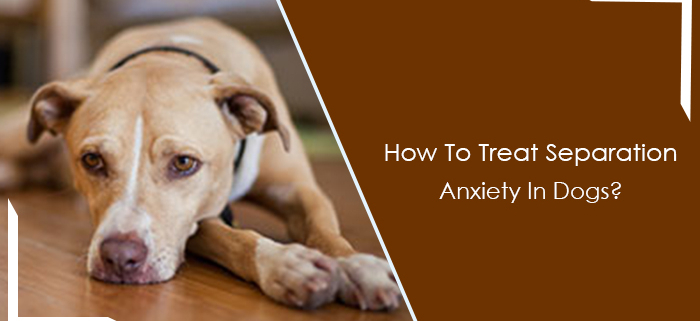How To Treat Separation Anxiety In Dogs?
The first step in treating separation anxiety in dogs is to make sure the dog has some form of playtime or exercise during the day. This can help the dog learn to enjoy being alone and reduce its stress levels. The next step would be to create a routine for your dog so that it knows what to expect during the day and what will happen when you leave. This will help them feel more relaxed and safe while you are gone.
Dogs that have separation anxiety show very edgy behavior when they are alone. A few of those behaviors are:
- Scratching and chewing the corners of the doors and windows.
- Grooving and digging the walls.
- Excretion or urination.
- Barking, crying or whining.
Separation anxiety disorder is a strong fear of being left alone by loved ones. It happens due to the hyper-attachment between a dog and its owner. Separation anxiety is a serious issue that creates concern among pet owners. Sometimes they also get frustrated because of the behavior of their dogs.
However, you can do a lot of things to help your dog in such situations. But first, let’s understand the causes of why your furry baby acts like this:
- If the owner is changed.
- Staying alone for the first time.
- If they just moved from a shelter to a new home.
- If the family routine changes.
- Or the loss of a family member.
Symptoms Of Separation Anxiety
To know if your dog has separation anxiety, you can keep an eye on their activities and check if they match any of the following symptoms:
1. Striding
It has been seen in a few dogs that when they are left alone, they get nervous and start walking on the same path, following the same pattern. The pattern can be circular or straight, or back and forth.
Note: This behavior doesn’t happen when the pet parent is home or around the dog.
2. Barking And Howling
If your dog has separation anxiety, it may bark when they are alone. They sometimes howl as well, and they show this behaviour only when the guardian is not around.
3. Digging And Destructions
At times, when dogs are alone, they start scratching and digging all the things nearby, including the walls, doors, and windows. They even chew corners of different objects like tables, chairs, or toys. In this destructive hassle, they sometimes hurt themselves.
4. Urination
A lot of dogs with separation anxiety frequently urinate in the absence of their guardian. However, this behaviour is not seen when the guardian is around.
5. Coprophagia
Many dogs suffering from separation anxiety, when left alone, start consuming their excrement. But, they don’t show this behaviour when they have someone with them.
6. Loss Of Appetite
In some dogs, separation anxiety can lead to decreased interest in food, and they also start ignoring treats and bones.
7. Try to Escape
If your dog is suffering from separation anxiety, then it might have tried to escape your house when you are not around them. They may have chewed your doors or windows to get out of the room.
How To Treat Separation Anxiety?
Separation anxiety is a common problem in dogs. We should try to provide our dogs with what they need in order to feel less anxious If you think that your dog is suffering from separation anxiety, then the first thing you should do is consult a vet to know what to do next. They may suggest some medicines that can help your dog during nervousness.
Apart from that, verify if the problem is mild or serious.
If it is mild, then follow these few instructions:
- Every time you leave your house, give your dog some treats.
- Give them some soft toys or puzzles to play with; this will engage their time.
- Try not to make a lot of noise or greet, when you come or leave your house.
- Let your dogs have your clothes to get your smell.



Leave a Reply
Want to join the discussion?Feel free to contribute!